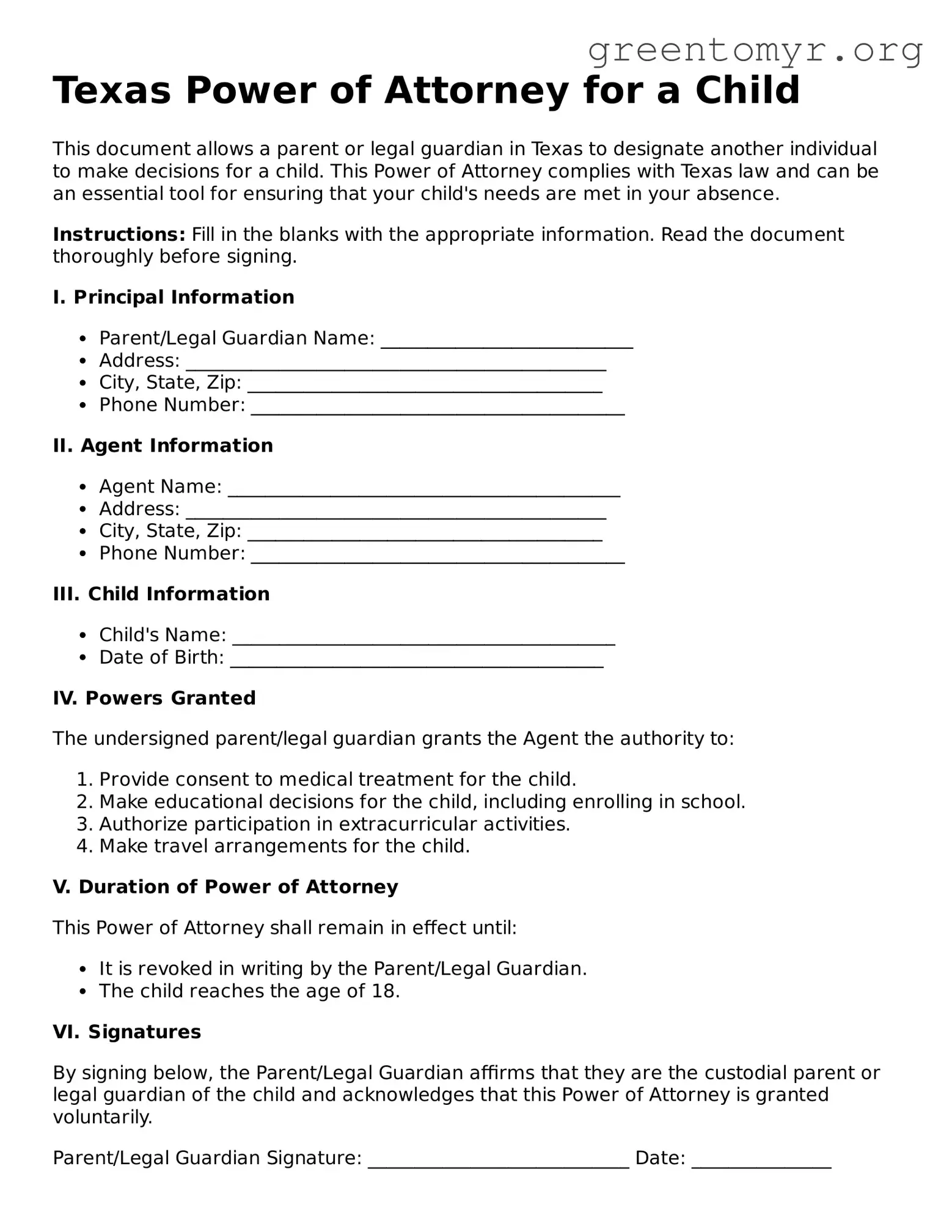Texas Power of Attorney for a Child
This document allows a parent or legal guardian in Texas to designate another individual to make decisions for a child. This Power of Attorney complies with Texas law and can be an essential tool for ensuring that your child's needs are met in your absence.
Instructions: Fill in the blanks with the appropriate information. Read the document thoroughly before signing.
I. Principal Information
- Parent/Legal Guardian Name: ___________________________
- Address: _____________________________________________
- City, State, Zip: ______________________________________
- Phone Number: ________________________________________
II. Agent Information
- Agent Name: __________________________________________
- Address: _____________________________________________
- City, State, Zip: ______________________________________
- Phone Number: ________________________________________
III. Child Information
- Child's Name: _________________________________________
- Date of Birth: ________________________________________
IV. Powers Granted
The undersigned parent/legal guardian grants the Agent the authority to:
- Provide consent to medical treatment for the child.
- Make educational decisions for the child, including enrolling in school.
- Authorize participation in extracurricular activities.
- Make travel arrangements for the child.
V. Duration of Power of Attorney
This Power of Attorney shall remain in effect until:
- It is revoked in writing by the Parent/Legal Guardian.
- The child reaches the age of 18.
VI. Signatures
By signing below, the Parent/Legal Guardian affirms that they are the custodial parent or legal guardian of the child and acknowledges that this Power of Attorney is granted voluntarily.
Parent/Legal Guardian Signature: ____________________________ Date: _______________
Witness Signature: ________________________________________ Date: _______________
Notary Public (if required): ________________________________ Date: _______________
